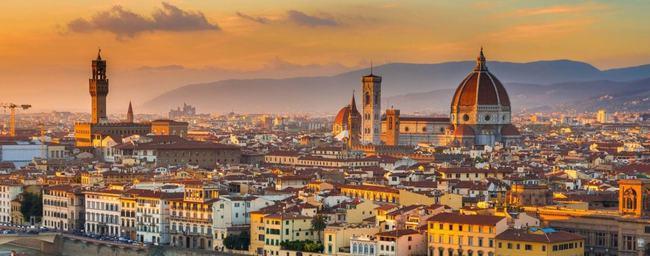Rome
In different corners of the world, through the precipitation of culture, many historical cultural cities have been born, including the figure of Rome. Around 2000 BC, archaeological discoveries confirmed that this part of Rome was already inhabited by Romans. Since its founding on April 21, 753 BC, it has a long history of more than 2,700 years, and in the face of the self-inhabited and grown Roman city, the Romans proudly called it the "Eternal City". In the traditional sense, the Romans attributed the founding of the city of Rome to the hero Romulus. He and his twin brother Remus are descendants of the hero Aeneas. Aeneas, the son of the Greek goddess Aphrodite (known as Navis in Roman mythology), came to Italy after the Greeks occupied the city of Troy and began the story of Rome.
Rome, the capital of Italy, is one of the birthplaces of many cultures in the world, and has been left behind by thousands of years of precipitation, where you can learn a lot of rich cultural heritage. Judging from its construction history, it was once built on 7 hills between the Taipo River, and the road is not calm, because it has been repeatedly revived after several degrees of destruction, and cultural overlap has occurred here. The word Rome is an ancient name, and Rome is known as the "City of Ten Thousand Cities" because of its glorious history, the glory of the roman Empire at that time, and the supremacy of the Catholic Church of the religious flower girl, which constituted the glory of Rome for nearly 2500 years. Now the capital of Italy, Rome is the largest city in Italy. Rome is the catholic center of the world, and is also known as one of the world's cultural capitals and one of the world's historical and cultural cities.
Rome is known as the world's largest "open-air history museum", a title derived from the exploration of the culture of the past. The ancient Roman open-air arena, also known as the Colosseum, one of the world's eight most famous attractions, was built in the 1st century AD and has a very long time. Covering an area of about 20,000 square meters and a circumference of 527 meters, this oval building is a symbol of the ancient Roman Empire, and it is a very amazing existence to have such a large area of buildings under the level of the time. From the perspective of structural layout, the wide Imperial Avenue is lined with senates, shrines, virgin shrines and some famous temples, such as the Pantheon, which are also very rich in architectural content.
In terms of orientation, to the north of the ruins of this open-air arena is the triumphal arch that records the exploits of Emperor Severus's expedition to Parthia, to the south is the Triumphal Arch of Titus, which records the achievements of Emperor Titus in Jerusalem, and not far south of the Titus Triumphal Arch, there is also the largest triumphal arch of Rome built to commemorate the victory of Constantine the Great over Maxenti. On the east side of the Imperial Avenue, Trajan Square was the commercial center of the ancient Roman city. Next to the market stands a 40-meter-high triumphal column with spiral reliefs depicting the story of Emperor Trajan's expedition to the Danube River Valley, an open-air arena that allows people to see so many historical traces from the building, and the title of open-air history museum is well deserved.
Piazza Venezia in the center of the ancient city is 130 meters long and 75 meters wide, and is the meeting point of several major avenues in the city, and still occupies the position of the central street. On the left side of the square is the ancient Renaissance building Venezia Palace, and on the right is the Venetian insurance company building similar to the Style of the Palazzo Venezia. In addition, the majestic Palace of Justice, the splendid Piazza Navona and St. Peter's Basilica all reflect the artistic style of the Renaissance. There are also hundreds of museums in Rome, including Renaissance art treasures, which feel like traveling through time and space, and see the bustling scene of that time.
Rome concentrates most of the monuments of Italy's independence and unification movement. On the central high platform of the monument on the right side of Piazza Venezia stands a large gilded bronze statue of Emmanuel II riding a horse. Emmanuel was the king who led the people to drive out foreign occupiers and unify Italy. This monument is called the "Altar of the Fatherland" by Italians. On the West Bank of the Tiber, on the Canicolo Ridge, stands a monument to Garibaldi, the Italian national hero who led the liberation of Rome.
The above is comprehensively compiled by the editor from the network, for reference and learning only, thank you!
